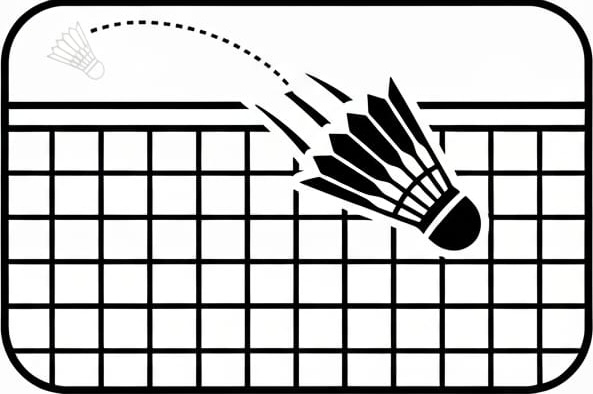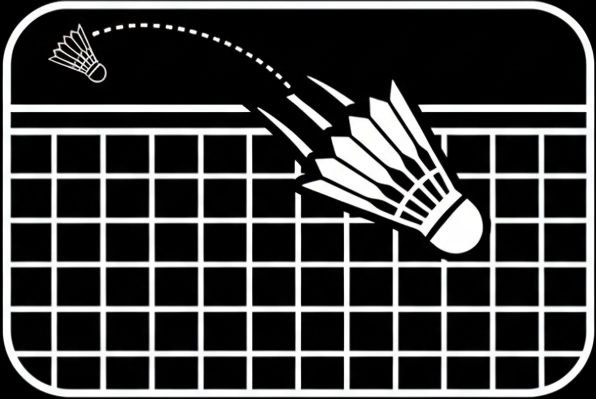The balance point of a badminton racket—where the weight is distributed along its length—has a profound effect on your playing style, power, maneuverability, and overall game enjoyment. Whether you’re just discovering the sport, playing competitively, or seeking to upgrade your equipment, understanding the differences between head-heavy, head-light, and even balance rackets can help you make an informed, confidence-boosting choice and prevent chronic wrist injuries (take it from me).
What Is Racket Balance?
Balance in badminton rackets refers to how weight is distributed from the handle to the head. The balance point is measured, typically in millimeters (mm), from the bottom of the handle to the point where the racket balances horizontally on a finger. The ways weight is distributed affect everything from swing speed to power and are generally grouped into three main categories:
- Head-Heavy – when you wanna smash.
- Head-Light – when you wanna gently tap that birdie. 😊
- Even Balance – when you want it all.
Head-Heavy Rackets
A head-heavy racket has more weight distributed toward the head. This is usually classified by a balance point above approximately 295 mm.
Use this when you want to float like a butterfly and sting like a bee. Just like me. (Peace out homie!)
Key Features:
- Powerful Attacks: The extra mass in the head helps generate more momentum and power with every swing, especially on smashes and clears.
- Dominant at the Back: These rackets excel in backcourt play or for those with attack-oriented styles. Singles players and offensive-minded doubles players often favor head-heavy models. This is me. I am always looking to smash every shot when I have half a chance.
- Requires Strength: The emphasis on head mass can tire the wrist and shoulder over long sessions if you’re not used to it or lack supporting muscle strength.
- Less Maneuverability: Due to their heavier feel, quick exchanges and net play may be more challenging, so they’re less ideal for defensive or counterattack roles.
Ideal For
- Power hitters
- Singles players
- Advanced or physically strong players
Pros
- Maximum power on smashes, clears, and deep shots
- Great for aggressive, attacking gameplay
Cons
- Can feel sluggish or less agile for net kills or rapid changes. Hardest when you want to slice the bird at the net for a drop shot.
- May cause fatigue or discomfort for beginners or those with limited arm strength
Head-Light Rackets
A head-light racket feels lighter towards the head and has a balance point below about 285 mm.
Key Features:
- Speed & Agility: Less weight at the head gives you faster reaction times and easier maneuverability, making it easier to play quick defensive shots or intercept at the net.
- Ideal for Doubles: Many doubles players prefer head-light rackets to keep up with the speed and dynamic movement required in fast rallies.
- Reduces Fatigue: These rackets are generally easier on the arm and shoulder, making them suitable for players seeking reduced strain or just starting out.
- Sacrifices Power: Less head weight means it’s harder to generate smash power compared to head-heavy options.
Ideal For
- Defensive or net-oriented players
- Doubles specialists
- Beginners
- Players prone to wrist/shoulder fatigue
Pros
- Excellent swing speed and control at the net
- Easiest for lightning-fast rallies and defensive play
- Less demanding on the wrist and shoulder
Cons
- Requires more effort to generate power in clears or smashes
- Not optimized for pure attacking styles
Even Balance Rackets
Even balance rackets have a balance point between approximately 285 mm and 295 mm, so weight is distributed between the handle and the head.
Key Features:
- Versatility: These rackets offer a balanced blend of power and control, working well for a variety of playing styles and situations.
- All-Round Play: Even-balance rackets allow players to transition smoothly between attacking from the back and defending at the net.
- Balanced Workload: They don’t overly tax any particular muscle group and are often recommended for beginners still identifying their favorite playing style.
Ideal For
- All-rounders
- Players switching between singles and doubles
- Beginners seeking versatility
Pros
- Adaptable to many styles and levels of play
- Offers a good compromise between power and speed
Cons
- Not as specialized as head-heavy or head-light options for certain advanced tactics
Table: Racket Balance Comparison
| Racket Type | Balance Point | Key Advantages | Best For | Potential Drawbacks |
| Head-Heavy | > 295 mm | Maximum power on attacks and smashes | Attacking singles/doubles | Slower maneuvering, arm fatigue |
| Head-Light | < 285 mm | Quick reactions, speed, and agility | Defensive/net, doubles | Less pure power in smashes/clears |
| Even Balance | 285–295 mm | All-round versatility (power & control) | Beginners, all-round players | Lacks specialized extremes |
How to Choose the Right Racket Balance for You
1. Reflect on Your Playing Style:
- Prefer attacking from the back of the court? Try a head-heavy racket.
- Love net play, fast defenses, or doubles matches? A head-light racket might be your best option.
- Not sure, or play both singles and doubles? Even balance rackets suit a wide variety of situations and let you experiment before specializing.
2. Consider Physical Comfort:
- If you experience wrist, shoulder, or arm discomfort, start with a head-light or even balance racket for lighter handling.
- Strong, advanced players who value raw power can confidently pursue head-heavy options.
3. Don’t Overlook Shaft Stiffness:
- A racket’s stiffness further fine-tunes response, so factor this in after deciding the balance that matches your needs.
4. Test and Transition Gradually:
- Swapping balance types? Make incremental changes; sudden, large shifts can disrupt your timing and enjoyment on court.
Frequently Asked Questions
Yes, a head-heavy racket provides extra mass in the head, resulting in more powerful clears and smashes and definitely chronic wrist injuries if its not your playing style is not attacking.
Absolutely. Head-light rackets offer superior agility and quick response, invaluable for rapid net play or defense. I personally love my new Nanoflare 800 pro. Its great at the net.
An even balance racket is the most flexible for both disciplines, while head-light rackets excel in doubles and head-heavy in singles.
Balance the shaft on your finger (No pun intended). If it tilts heavily toward the head or handle, it’s head-heavy or head-light respectively. If it balances near the center, it’s even balance.
Always test a racket before buying if you can—comfort and feel are personal. With minimal number of brick and mortar badminton stores in the U.S., most badminton retailers offer a return program for this reason. Please read terms and conditions.
If you’re still undecided, start with an even balance model and adjust as your play evolves.
Remember, adding grips or strings changes the balance slightly, so factor this in during setup.
If your partner stresses you out, keep a Head heavy racket in handy. Fair warning, this may backfire.





